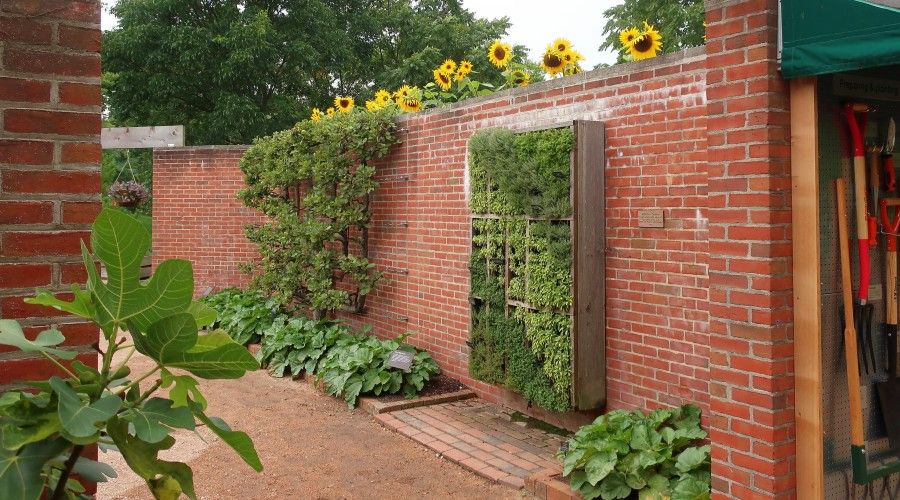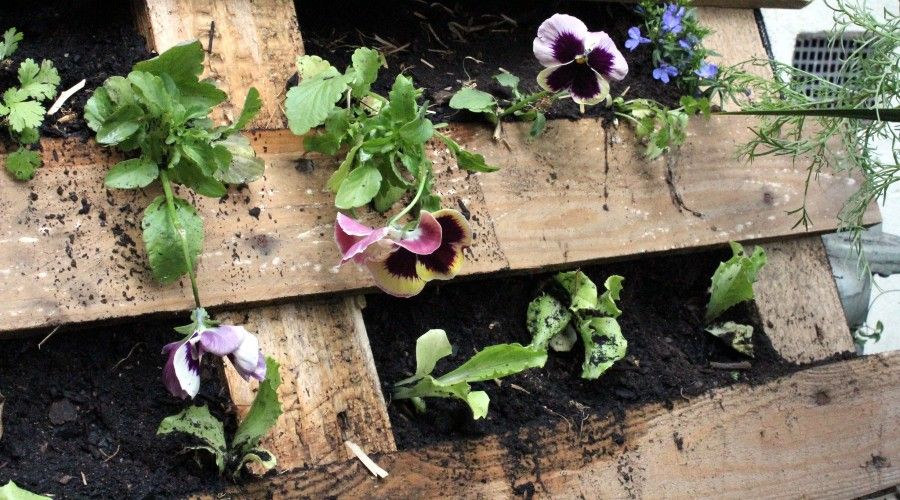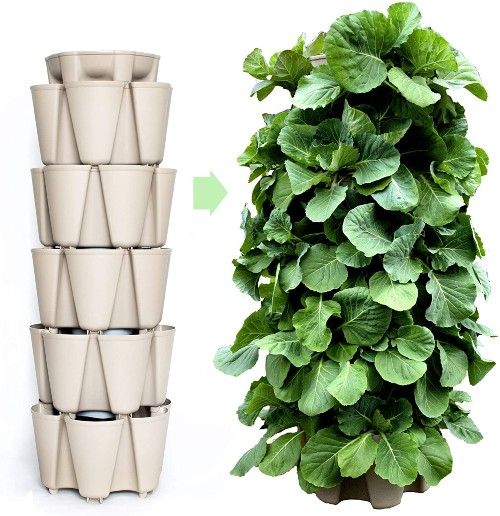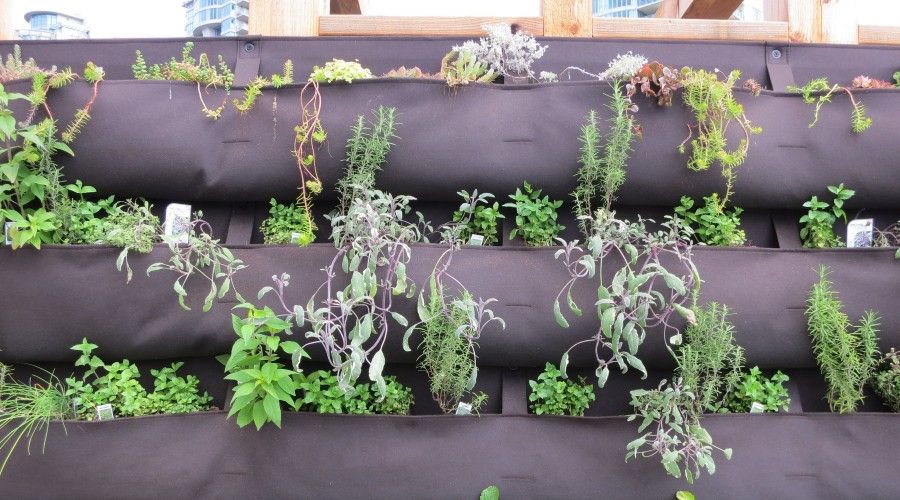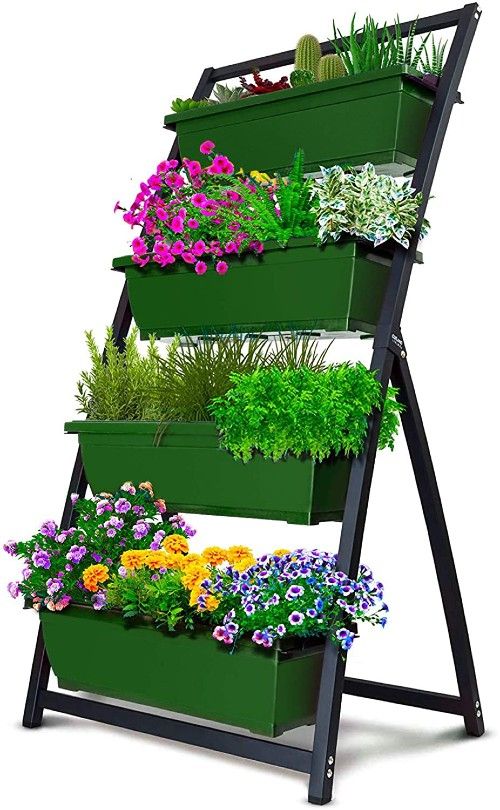Gardening is a popular activity used to improve mental health and reduce stress and a lower-cost option for accessing higher-quality, fresh food. However, many people view gardening strictly for those with large properties to build a traditional garden bed. The truth is that there are many options available to support gardeners in any space, including using raised garden beds, a vertical garden, or container gardening.
If you read this and find yourself asking what vertical garden is, then you’re not alone! While these innovative garden designs have recently been gaining popularity, the use of vertical gardens, hanging gardens, and ‘green walls’ can be traced back to the ancient Babylonians. In this guide, I will look at what is considered a vertical garden and why you should consider starting your vertical garden today!
What is a Vertical Garden?
Image credits: various Brennemans via Flickr
Unlike traditional gardens that focus on spreading plants over a large horizontal surface, vertical gardening uses vertical space to create a large garden with limited room. It includes tiered planters, the use of vines on a vertical trellis, or even mounting pots on a wall surface to create a living wall. The options are endless.
Vertical gardens are used in a variety of different ways, both functional and aesthetic. You can use them to accommodate more plants in a smaller space, create a barrier, hide an unattractive wall or fence, or bring the feel of a lavish garden into any room indoors.
To create your vertical garden, consider how you want to incorporate it into your available space. For example, if you are gardening against a fence or wall, you may use that surface to secure planters or a trellis to extend the garden upwards. If this isn’t available, you may need to use a freestanding garden frame designed to hold planters in a tiered pattern.
GreenStalk Patented Large 5 Tier Vertical Garden Planter
With it’s patented internal water system, this garden tower planter is a great option for growing strawberries, vegetables, herbs, or flowers with very limited space.
What Plants Grow Best in a Vertical Garden?
You may be surprised to learn that you can use vertical gardening to grow a wide variety of different fruits, vegetables, flowers, and other plants. The only major limitation is the size of the planters you are using compared to the size requirements of the fully grown root structures of your plants.
Vine plants are a popular choice, whether climbing vines with eye-catching flowers or vines producing fresh produce. You can train these vines to grow up by using trellises, garden netting, pergolas, and fencing.
Hanging pots, tiered gardens, and mounted planters are great options to incorporate small to medium-sized plants. Pay careful attention to the recommended spacing required for each plant. Popular examples including succulents, common annual garden flowers, smaller shrubs, and herbs.
What Are the Benefits of a Vertical Garden?
Image Credit: Ruth Hartnup
Ability to Garden with Limited Space
If you live in a smaller living space such as an apartment or condo, vertical gardening is a great option to expand on your gardening efforts. Often, those in smaller living spaces limit themselves to a small countertop herb garden or a few potted houseplants. However, a vertical garden will allow you to expand your gardening to include a much larger number of plants.
Many apartment owners set up a full vegetable garden using vertical garden sets that require no yard space. It allows them to raise a wide variety of fruits and vegetables indoors or on their balconies. It also allows them to enjoy the benefits of fresh, homegrown produce even if they live in the middle of a large city with no yard.
Outland Living 4-Ft Raised Freestanding Garden Bed
Four large rectangular planters arranged in a tiered pattern on a sturdy vertical frame offer plenty of room for your gardening needs.
Grow More Plants in a Smaller Footprint
If you have tight space and are looking for solutions to optimize it, a vertical garden is a great solution. Larger plants like pumpkins and zucchini can be planted directly into the ground to provide the necessary room for their roots. However, planters can be used to extend the garden upwards, accommodating additional plants.
Better Air Quality Indoors
Plants are known for their ability to remove harmful chemicals like carbon monoxide and formaldehyde from the air. Therefore, including many plants, as one would see in a vertical garden, you can clean the air in an indoor space naturally while also adding to the space with a pop of color. It promotes a healthier atmosphere, making it a popular choice in offices and other work environments.
Healthier Plants
When you use a vertical garden set-up, you increase the air circulation among your plants. It dies off the leaves faster after any rainfall or watering, which reduces the risk of disease caused by the development of moisture-loving fungi. It also provides you with easy access to your plants. It then leads to earlier detection of any disease or pests. By catching these problems earlier, you can address them quickly, preventing the problem from getting out of control.
Get Started with Vertical Gardening Today
Start by carefully assessing the space that you have available and the garden structure that it can support. Do you have the space for tiered or vertical planters? Are you limited to a smaller option like a wall-mounted planter or window box?
Whether you are looking to expand your outdoor gardens with more plants than traditional gardening allows or starting an indoor garden, vertical gardening techniques offer a great solution. With a little careful planning, you can set up your ideal indoor or outdoor garden space and start enjoying the benefits of gardening today!

